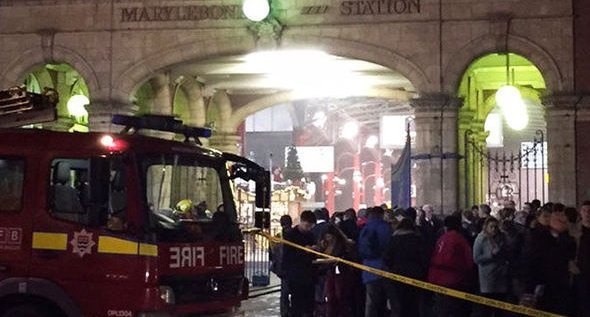It wouldn’t feel like Christmas without some extra illumination; we’re well into candle season and many workplaces are now adorned in festive lighting. And at this time of year there are also a lot of extra appliances being used like portable heaters. All of which means additional fire risks. We definitely don’t want to dampen anyone’s festive spirit but we do want you to be safe. Obviously it’s far better to avoid a fire breaking out in the first place but it’s essential that processes are in place just in case it does. Fire detection and fire fighting equipment that’s fit for purpose and well maintained is a must. But it’s also vital that evacuation plans are up to date and that everyone knows what to do in an emergency.
Your business emergency fire evacuation plan
Every business should have a written fire emergency evacuation plan in place.
It must cover all the actions people should take if there was a fire: for example, what they should do if they discover a fire or hear the fire alarm. It needs to highlight safe meeting points as well as cover arrangements for calling the emergency services.
The plan should also clearly identify escape routes; there must be enough of them to allow for both the number of people likely to need to leave the building plus the fact that some routes could be blocked off by smoke or fire. Escape routes need to be as short and direct as possible and illuminated by suitable emergency lighting.
The level of detail beyond that depends on the nature of your premises and business and will be guided by your risk assessments as specific risks will vary considerably. Your plan needs to take into account the likely occupants of the building. Will it be mainly employees who are familiar with the layout and have participated in evacuation training and fire drills? Or could there be guests, visitors and users who will only be in the building for a short time and are unlikely to know the layout?
Could anyone with particular vulnerabilities, like mobility issues or visual or hearing impairments, be in the building? If so, what additional arrangements can be made to make sure they get out safely? In some instances, it may be better to provide refuge areas where very vulnerable occupants can be sheltered until the fire service can assist. These considerations must all form part of your overall evacuation plan strategy.
You’re required to nominate and train enough people to help with fire safety duties including evacuation and while you’re not obliged to formally appoint fire marshals to do this, many businesses choose to do so. Once your plan’s in place, be mindful of any subsequent changes in the building or types of users and update it along with any other associated documentation like fire alarm zone plans.
Do you have an escape plan for your home?
We’re all responsible for fire safety in our own homes but as it’s not subject to the same regulations as commercial buildings it’s easier to overlook it. But take a moment to consider the risks. Do you have an escape plan if a fire did occur?
What would you do if the fire was coming up the stairs? How could you help vulnerable occupants, like children, escape? If they’re old enough, have you explained to them what to do? It only takes a few minutes to work out the best routes and to tell others and it could save valuable time in an emergency. Think about how you could facilitate a quick escape via those routes: keep keys out of view but near doors so they can be quickly unlocked. Tell others where they can find the keys too.
Clearly it’s far better to prevent fire breaking out but, whether at home or at work, it’s also essential you can deal with a fire emergency. Up front planning plus ongoing monitoring and maintenance where appropriate means you’ll be able to do just that. We wish you a very happy and safe Christmas.
One complete fire and security solution
Need a local team to help with fire safety and security?
